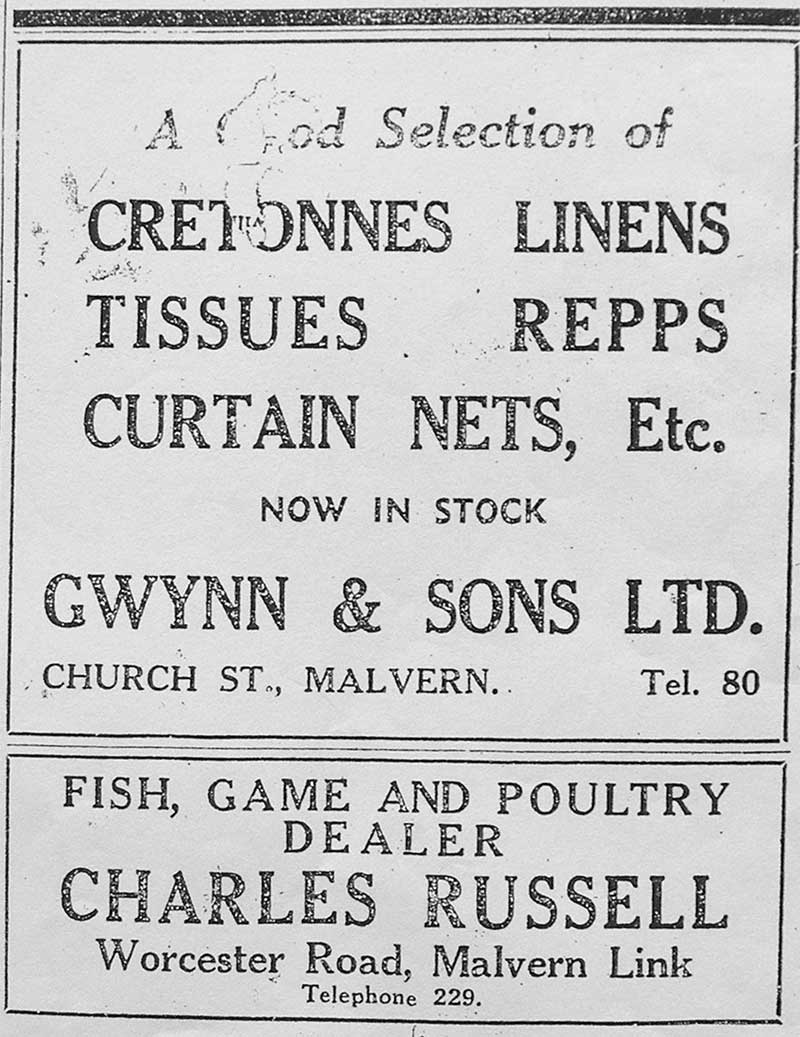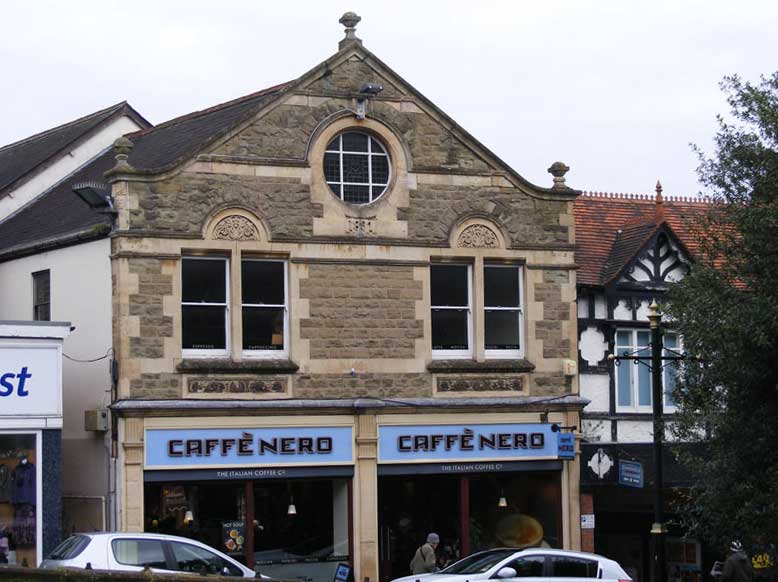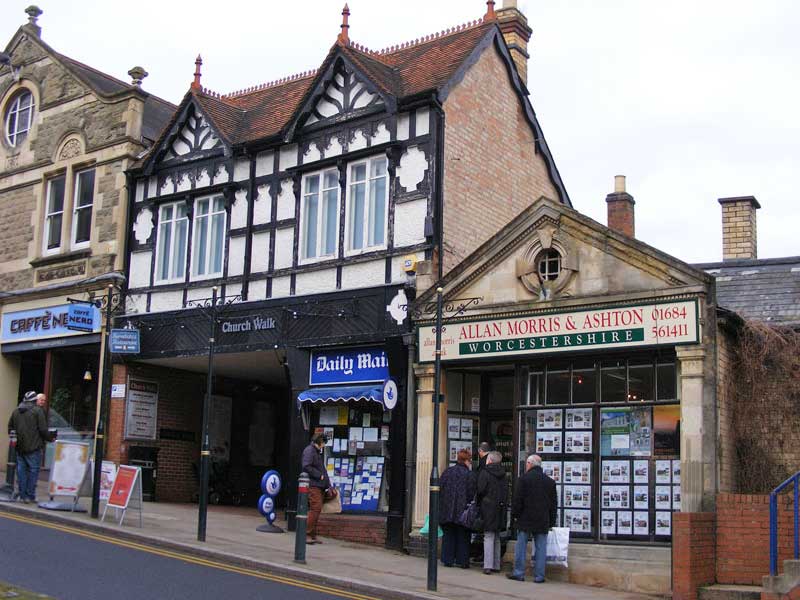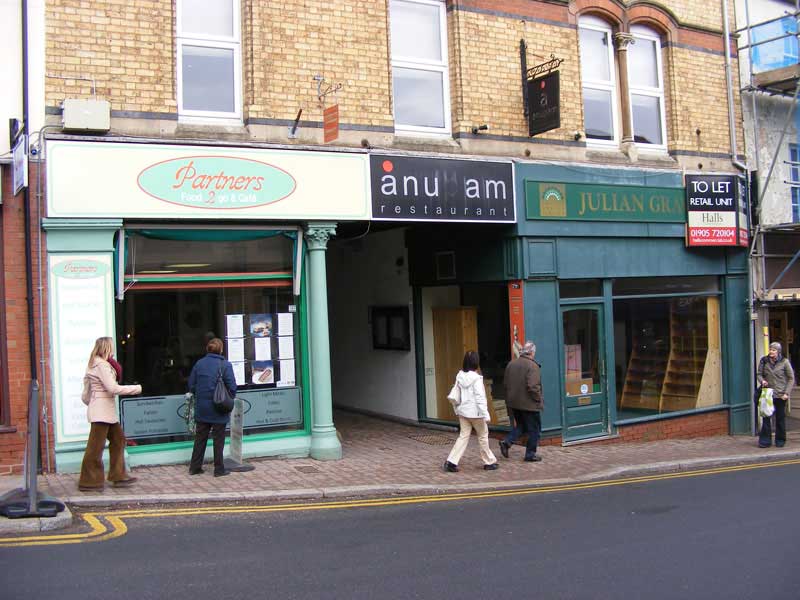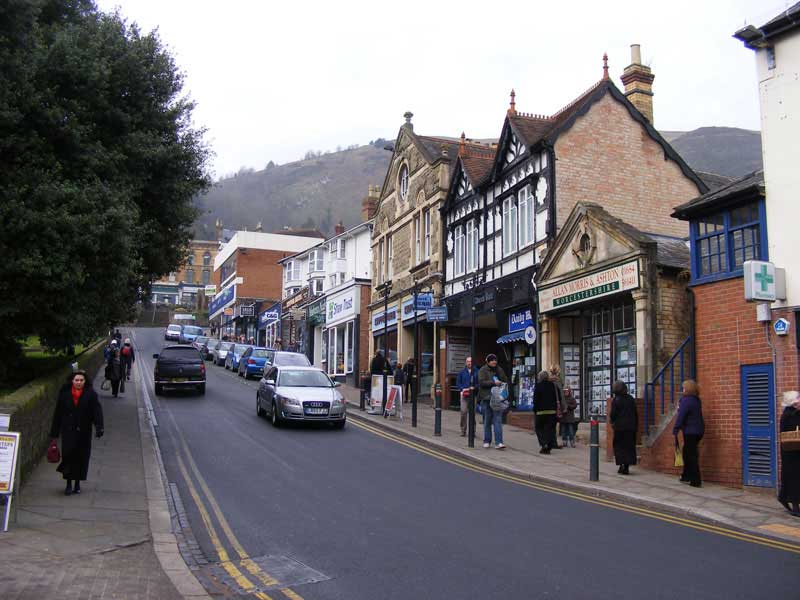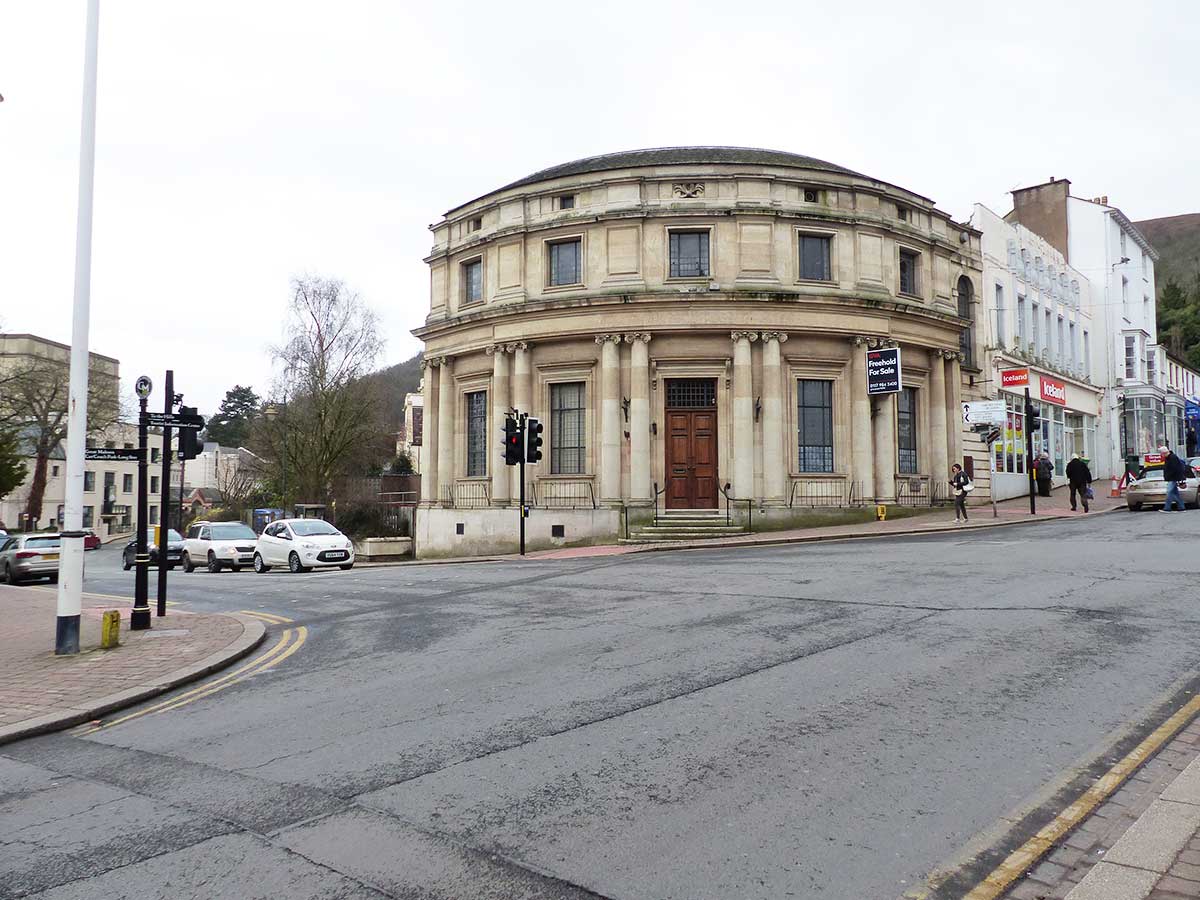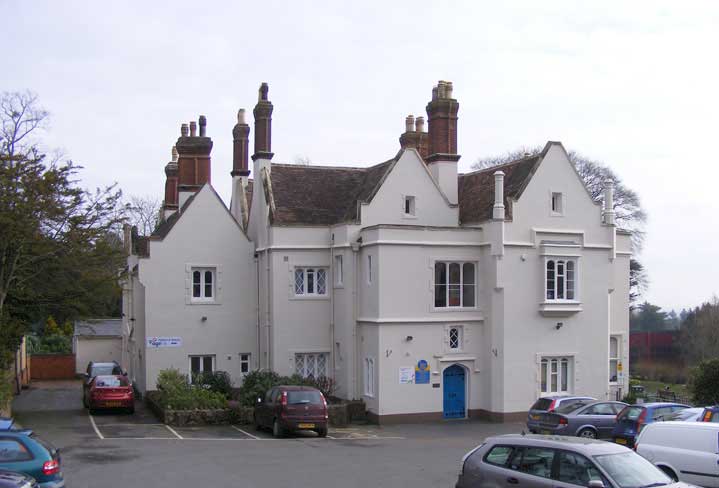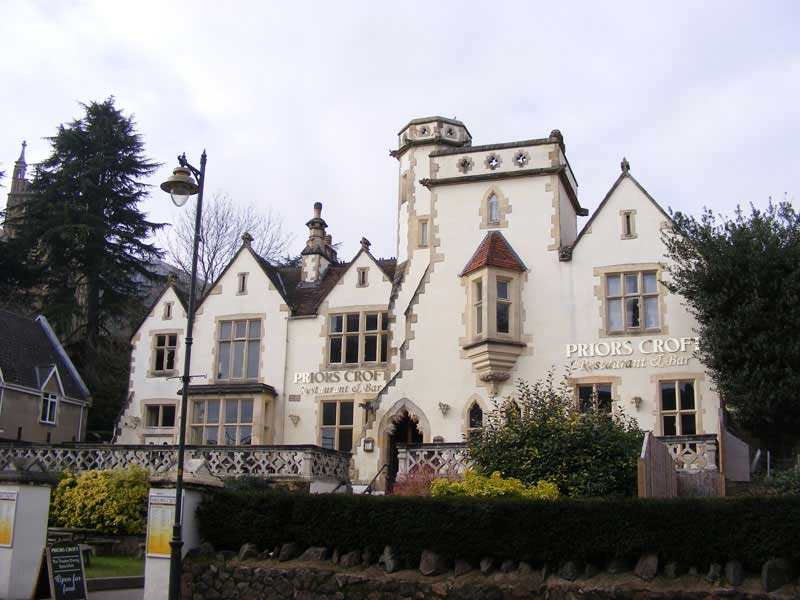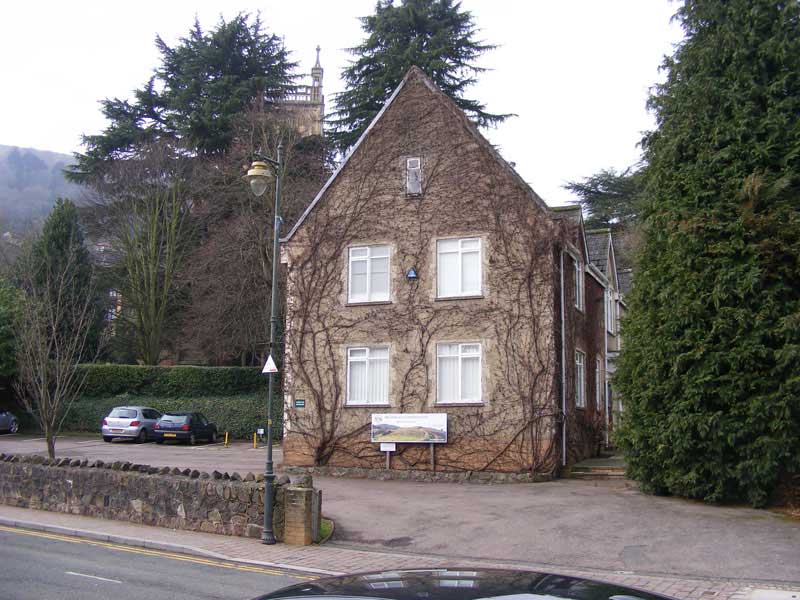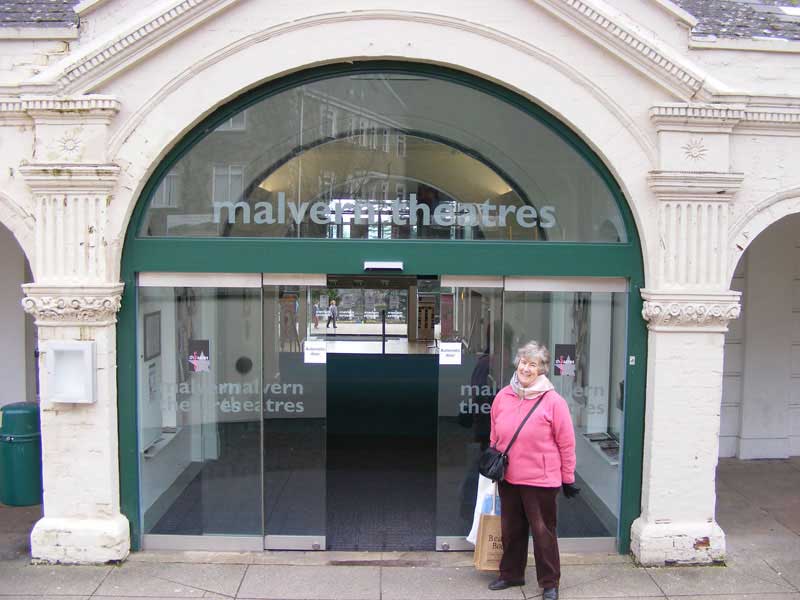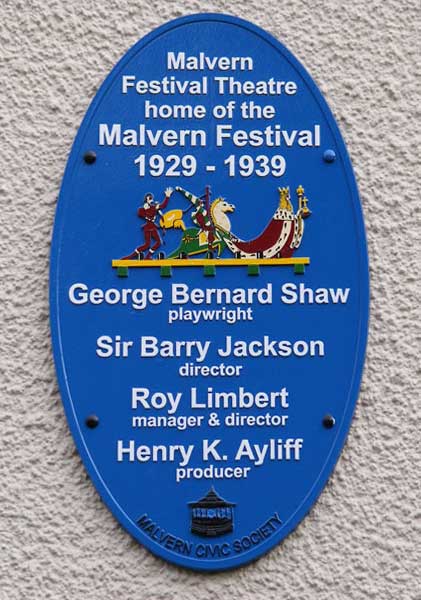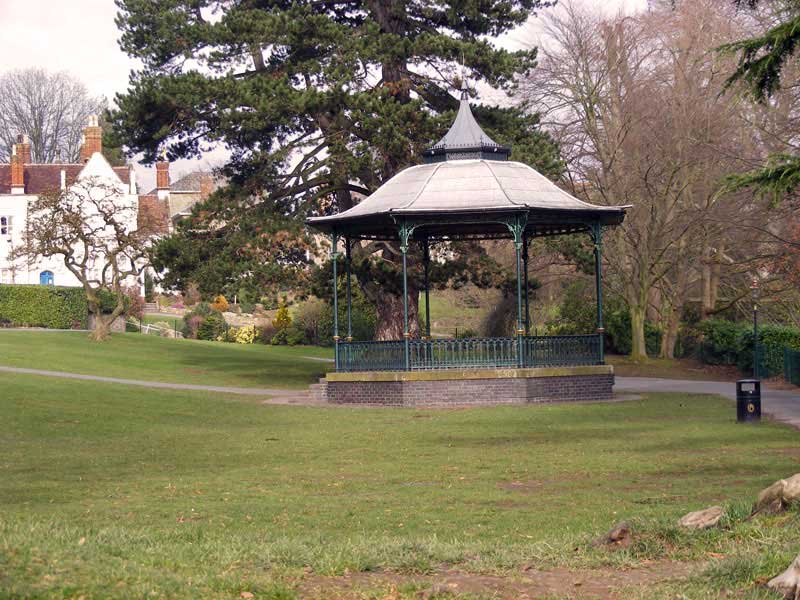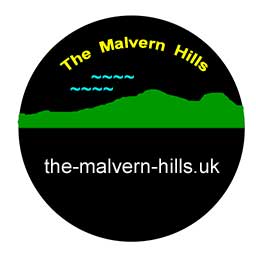
Angus and Rosemary's Miscellany
of Malvern - Photo Gallery
A stroll down Orchard Road Great MalvernOverviewOrchard Road is a residential area, mostly of Victorian houses, between the south side of Priory Park and Malvern College. A nice area where the sun sets a little earlier due to the shadow of the Malvern Hills, but with easy access to the park, shops and theatre. This trail is intended to show you a little more of the Victorian architecture of Great Malvern it takes you on a circular walk starting in Southlea car park in Priory Road, along Orchard Road, right, into Priory Road and right again into Abbey Road arriving at the Abbey Gateway and Great Malvern Post Office. Then returning to the car park through the Priory Churchyard and Priory Park to your starting point.
Southlea car park in Priory Road, Great Malvern Start
The flow of water here is reputed to have been fairly poor, and rusty. Possibly helpful for those suffering from iron deficiency anaemia!
A green plaque on the wall of the cottage reads:- 150th Anniversary of the Water Cure The Chalybeate Well under this cottage was used by visitors for medicinal purposes in the 18th and 19th centuries The Malvern Civic Society 1992
Pevsner describes this as irregular stuccoed Gothic; big canted bay with pointed windows, battlements, and octagonal turret behind. The house is Grade II listed and thought to date from the early or mid 19th century. At the top of steps you come into Priory Park by the Swan Pool. Turn left here and continue up the footpath to the north end of Orchard Road. Alternatively you can walk up through the park past the childrens' play area. Orchard RoadAs you turn left into the north end of Orchard road you will see Park View on your right which is now apartments but was once a grand water cure establishment built for Dr James Wilson circa 1848 (ref 1).
Park View, once Dr Wilson's water cure establishment Gratton House (extinct)Opposite, on your left, is the Bowling Green where Dr Wilson's home, Gratton House, once stood.
Bowling Green The doctor died in 1867 and the 1891 census recorded a girls' school at Gratton House run by Catherine Marian Horry (ref 2). In 1901, Stevens directory records it was a ladies college run by Mrs Pike, the Britten sisters and Mrs J W Garner. Later trade directories record a school run by Julia Britten until 1904 (ref 3). In 1910 a group of Roman Catholic nuns came to Malvern from Bruges in order to set up a place of retreat for women. The order was the Convent of the Retreat of the Sacred Heart and with the help of St Ursuline's convent they were able to take the lease of Gratton House, where they remained until at least 1914. This must have seemed a good location, as St Edmunds RC church had been built on the corner of College Road in 1905 and there was a monastic community at Townshend House next door to the church. However perhaps it did not attract women from a wide enough circle as later the Order took additional premises at Harborne Hall in Birmingham. Then Gratton House then reverted to a private home until it was acquired and demolished by Malvern UDC about 1937. Orchard LodgeNext to the bowling green is Orchard Lodge which appears on an 1884 map of Great Malvern.
Orchard Lodge, 16 Stevens directory of 1901 records that Orchard Lodge was a ladies college run by Mrs JW Garner, and it was almost certainly part of the college at Gratton House, next door, mentioned above. In 1911 the house was advertised to let so the school must have closed. Orchard Lodge was purchased by Malvern Girls' College in 1921, and is now apartments. Malvern HouseThrough a gap on the right, you can see the back of Malvern House in Abbey Road which was built in 1859 for Dr James Wilson to accommodate more water cure patients.
Rear of Malvern House Orchard GrangeOrchard Grange, on your left, is a beautiful property now divided into apartments, possibly built circa 1855.
Orchard Grange, 10 An 1884 map of Malvern shows Lorraine Cottage at this position. In 1901 it was the home of barrister George Somes Layard BA who was the father of anthropologist and psychologist John Willloughby Layard. Stevens directory of 1911 suggests that the house had strangely been renamed Danby Wiske which had been advertised to let. There is a village of that name in Yorkshire. Stevens 1940 directory suggests the house had been renamed Windermere. Click to read Paul Ferris's account on Facebook Malvern History page. About the houses on the west sideAn 1884 map shows only two houses on the west side of Orchard Road - Holmhurst opposite Orchard Lodge, and Huntingdon Villa/Dalvey on the corner at the top of the road. The postal address of the latter is in Priory Road. Stevens directory of 1901 records only three houses: Tedstone: occupied by Thomas W Wilden, apartments St Chad's: Miss May Geater (Fonthill) ladies college. Holmhurst: Mrs Sarah Perkins and Elizabeth Green St Chad's, which was advertised for sale in 1888, is remarkably similar to Holmhurst, so possibly the houses were designed and built as a pair. ChadsmoreFonthill Ladies' school in Abbey Road had moved to St Chad's in Orchard Road on or before 1901. In 1911 the school was being run by a Miss Russell. Later, Stevens directory of 1940 records the house had been renamed Chadsmore, occupied by Rev Cecil Edward Robinson MA. Chadsmore (see photo below) has been described by an estate agent as having 8 bedrooms, and now being divided into 4 apartments. You can glimpse Holmshurt of similar construction on the right of the picture.
Chadsmore, 5 Orchard Road TedstoneNext to Chadsmore is Tedstone, with a little turret on the SE corner.
Tedstone, 3 Orchard Road Stevens directory records that in 1911 Tedstone was occupied by Mrs GA Sheppard. In 1940 it was occupied by physician Guy Waterman Elkington MB, BS, MRCS, MRCP who we think may have been the grandson of Brigade Surgeon Arthur Guy Elkington (1832 - 1911). Elkington senior had been present at the Crimean battles of Balacclava and Inkerman. The house is now divided into two or more properties. About the houses on the east sideFollowing Lorraine Cottage mentioned above (now Orchard Grange), Stevens directory of 1901 recorded: The Palms: which is unoccupied Willows: Charles Bartter, apartments Cedar Gardens: William Thomas Acock, florist. It is not clear whether there was a house or just gardens where plants were grown. The Cedars: Thomas Acock, apartments (Cleveland on the corner at the top of the road was not mentioned as it has its postal address in Priory Road). The PalmsThe Palms (see photo below) is shown on an 1884 map of Malvern.
The Palms, 8 In 1911 The Palms was occupied by Alfred Shuttleworth who described himself as the Principal of an Art School. Harry Arbuthnot Ackworth later lived at the house, whose two sons Douglas and John died in the Great War. A manuscript book in Great Malvern library entitled: 'Record of names of Malvern Men who have served in his Majesty's Forces in the war 1914-1918' records:
They were just two of the 513 casualties of Winchester College. In Stevens directory of 1940 there is no mention of The Palms, or some other properties such as Prior's Mount in Priory Road, which suggests to us that these may have been used as lodgings for either radar boffins or the military and removed from the list by the censor. Prior's Mount for example was then the Officers' Mess for HMS Duke.
Willows and Cedar GardensWe did not find properties 'Willows' and 'Cedar Gardens'. The Willows may still exist below the road; if so, it is hidden behind a tall hedge, and approached by a narrow drive next to The Palms. This property could have been divided to form Secret Holt and Jacinth. A modern brick property named Birchdale now stands on the site Cedar Gardens (no picture).
Friends Meeting HouseAcross the Road, the Quaker Friends Meeting House, near the south end of Orchard Road, is a popular meeting place (see photo below), but note parking is difficult and Orchard Road is a cul-de-sac so, unless you are disabled, it is best to park at Southlea and walk up.
Friends Meeting House, 1 Orchard Road The Friends Meeting House is recorded in Stevens directory of 1940.
HuntingdonThe building next to The Friends Meeting House, at the top of Orchard Road, looked as though it was undergoing renovation in 2013. Here is a later and better photograph.
Huntingdon The house is marked on an 1884 map of Malvern as Huntingdon Villa - it then appears to be split into two, with the other part known as Dalvey. Between 1884 and 1888 Kellys Trade Directory records Rev Edward Henry Ball MA, Curate of Great Malvern, in residence at Huntingdon Villa. Dalvey has an access from Priory Road, and may be the property once known as the Dalvington Hotel. An American short wave magazine listed E Cross secretary of a Radio Society in residence at Dalvington in 1948 suggesting to us that perhaps boffins at TRE might have lodged there during WWII. In 1960 the Dalvington Hotel was purchased by Douglas House Girls' School to cater for 36 boarders; about ten years later the school merged with Malvern College.
The Cedars (extinct)The tired and plain looking Victorian residence shown below, which no longer exists, had been divided into apartments; it was unoccupied when this photo was taken in 2013 and only a few weeks later the building was demolished to make way for a development by local firm IE Developments of Hereford. The old house had four storeys on the eastern side, and was built on a steeply sloping site, so must have had fantastic views. We were told it had been suffering badly from damp and rot, and considered beyond economic repair. In its place a gated development, named The Revue, was under construction in 2014, incorporating a massive steel frame (see below).
The Cedars, 2 Councillor and local historian Roger Hall Jones told a meeting of the U3A Discussion Group that The Cedars had been built for water cure doctor Leopold Stummes, and that members of Roger's family had once lived there. Indeed, in Cross's Historical Handbook to Malvern (ref 4), which was first published in 1865, we found the following:
In 1911, retired granite merchant, William George Freeman, aged 84 years was in residence with his second wife, a daughter, cook and parlourmaid. He died just a few weeks later. The business John Freeman and Co with works at Penryn in Cornwall, started by his father, and continued by his brother, grew into a major concern shipping large quantities of stone for constructional projects both at home and abroad. William was a benefactor of St Mary Immaculate Catholic Church in Falmouth. In 1881 his daughter Amy Mary Freeman (1851 - 1939) married the well known marine painter Charles Napier Hemy (1841 - 1917) by whom she had ten children. Their son Louis Joseph Gilbert Napier Hemy became a Catholic priest, but very sadly died in the influenza epidemic of 1918 aged only 33 year. Four of Charles Napier Hemy's pictures were in the McCulloch Collection of Modern Art. Another reference to The Cedars can be found in Anthony Cooper's book 'Somehow They Knew', in which the author recalls, as a young Canadian soldier, lodging at The Cedars, in 1942, which was then a guest house. He relates that the establishment was run by a Mrs Beatrice Jones, assisted by a relative named Ruby and her nephew (ref 5). Anthony Cooper's future wife Tina Shields then worked at TRE and had lodgings at The Mythe on the corner of College Road opposite.
The Revue under constructionThe photo below shows the construction of the Revue underway in May 2014, on the site of The Cedars.
The Revue, part built in May 2014 Sherington House (Cleveland)The photo below is of the house, south of The Cedars, with pierced barge-boards, which stands on the corner of Orchard Road and Priory Road. It has entrances on both roads, and is numbered 44 Priory Road. Once a hotel, it is now apartments.
Sherington House, previously Cleveland 44 Priory Road The tall building next door at 42 Priory Road named Lansdowne Court, now apartments, was once 'The Vicarage'; see photo below taken on another occasion. Stevens directory of 1940 listed Rev Hubert Humphrey Middlemore Bartleet MA, vicar of Great Malvern in residence at the Vicarage. In 1911, Rev Charles Anthony Deane MA, vicar of Malvern and Rural Dean of Powyke had been in residence. Nowadays the vicarage lies near the junction of Clarence Road and Tibberton Road.
Sherington House and Lansdowne Court Once Cleveland and The Vicarage, viewed from College Road Nowadays both these properties are divided into apartments. Priory road
Not far along, Priory Road bends to the right joining into Abbey Road. On the left of this junction there used to be a memorial to Dr James Wilson who led the expansion of the water cure in Victorian times; it was demolished many years ago, but recently a new memorial has been erected by Malvern Civic Society. Priors LeaNear the junction, on your right, is a large Victorian Grade II listed property with a castellated porch named Priors Lea.
Priors Lea, 52 Priory road The house is described on the British Listed Buildings website as:
Priors Lea was once the nursery department of Croftdown girls' school across the road. The Red Door was the entrance to the upper class in the Nursery department. The fire escape doubled as an exit for classrooms on the front upstairs. The 'Tinies' were at the back of the house with safe entry onto the garden at the rear. In the 1970s the school was run by a Board of Governors with Mrs Portway-Fletcher as Headmistress (ref 7).
A wrought iron pedestrian gate (left out of picture) leading to the red door
on the first floor incorporates the name 'Wingletang'. A strange name
possibly after
Wingletang Down on the Isles of Scilly. Apparently there is a Wingletang
garden railway near Leigh Sinton. Strangely Priors Lea is not shown on the 1884 map of Great Malvern, unless it is the property marked as Abbey Villa a little further along Abbey Road. SouthfieldTo your left hidden behind a hedge is another Grade II listed property named Southfield, number 37 Priory Road (no photo). This is described on the British Listed Buildings website as:
Here Priory Road joins Abbey Road. Abbey RoadMalvern HouseMany houses in Abbey Road are already described in our page A Stroll Down Abbey Road so we only took a few snaps on our way to the Abbey Gateway. The photo below shows the front of Malvern House which was built in Jacobean style for Dr James Wilson to accommodate his growing number of water cure patients.
The front of Malvern House
A plaque to the left of the porch, placed by the Malvern Civic Society reads, Malvern House was built by Dr James Wilson in 1859 and continued in use for water cure patients after his death in 1867 Park ViewThe photo below shows a glimpse of the front of Park View, next door, which was built as a Hydrotherapy Establishment for Dr James Wilson and completed about 1848. Beyond can be seen the tower of the Priory Church above a modern brick structure forming an extension to the Abbey Hotel - which we think is slightly out of keeping with its surroundings.
On the front of Park View, to the right of the porch are two plaques placed by Malvern Civic society.
The green plaque reads, Britain's first purpose-built water cure establishment. Dr James Wilson practised here 1845 - 1867.
The blue plaque below reads, During the 1930s Evelyn Waugh often stayed here at the former County Hotel. He would visit the nearby Picture House, Captain Hance's riding academy in Church St and the Lygon family at Madresfield Court Below is another view of the modern extension to the Abbey Hotel, from the entrance to Park View.
AbbotsfieldOn the western side of the road is Abbotsfield which was once the home of water cure doctor James Loftus Marsden.
Abbotsfield The Abbey HotelProceeding ahead, past the right turn into Grange Road you will find the facade of the early Abbey Hotel built about 1849 by the Archer Family.
The Abbey Hotel The Abbey GatewayApproaching the Abbey gateway you may glimpse the Saturday market, as we did.
South side of Abbey Gateway Malvern Museum and Farmers MarketTo the left under the archway is the entrance to Malvern Museum which is run by volunteers and is open from April to October.
Entrance to Malvern Museum, left of picture On your right as you pass out of the Abbey Gateway you will see Mac and Jac's Cafe, replacing Pepper and Oz, and before that the butchers Cridland and Walker. Down narrow steps are the Christadelphian Hall and a bar known as the Malvern Lounge. In the half timbered building, on the right of the picture above, you will find the local printing firm First Paige at 17 and 19 Abbey Road, who have published some local history guides, including a very interesting booklet about the history of Park View. Another photo of the Abbey Gateway and Farmer's Market is shown below.
North side of Abbey Gateway and Farmers' Market
The Priory Steps and ShopsAt this point you could walk past the Post Office and turn right down Church Street, but instead take the steps into a small alley between the Post Office and the Abbey Gateway leading to some small shops and an entrance into the Priory Churchyard. On the corner of the Priory Steps is Lyttelton House incorporating Abbey Road Coffee, where you can either eat indoors or relax outside with a coffee. When this photo was taken the shop was named The Great Malvern Deli.
Steps and coffee shop In the 1920s this unit was a high class family grocers named Tipping and Morris. An advertisement relates:
About Tipping and MorrisToday, the claim there was a shop selling provisions at Lyttelton House from about 1780 seems exaggerated, but it could be true, though the original business was certainly not Tipping and Morris. Bachelor, Edward Tipping (1844 - 1924), born in Malvern, is first recorded as being a grocer and wine and spirit merchant at Lyttelton House about 1880. Earlier in 1873 he had been a grocer, tea dealer and provisions factor at St Ann's Place. His parents Thomas and Ann had been lodging house keepers in St Ann's Road and his family later ran The Mount Pleasant. These were the days when the water cure was in full swing and business must have been good. Edward Tipping retired about 1901 and we imagine the business Tipping and Co was continued by newcomer Edward Lloyd Morris (1862 - 1931), under the name Tipping and Morris, and then by his son Hedley and others until about 1960. Unlike the Tippings, Edward Lloyd Morris was not a local man and his origins are a mystery. He is not recorded in the index of births and does not appear in the census until 1881 when he was a grocers' assistant living in the household of draper, grocer and hop merchant Elias Puleston in High Street Wem in Shropshire. He gives his place of birth as Eastham, a district of Birkenhead. In 1888 at Chorlton in Lancashire Edward married farmer's daughter Mary Emma Tattersall. In 1891 he was a grocers' manager living in Huddersfield and later the 1901 census records him as a grocers' manager at Finchley near London. In the 1911 census Edward Lloyd Morris is recorded as a grocer now living at Wynella in Blackmore Road Malvern; his son Hedley aged 20 years is described as 'assisting father in business'.
The Malvern Remembers website records that Harold James Harris had worked at Tipping and Morris; the 1911 census indicates he was a vanman, so presumably was involved with making deliveries, much as Waitrose does today. Private 242410 Harold James Harris, 1/8th Bn The Worcestershire Regiment, the son of a stone mason, was killed by an artillery shell on 17th August 1917 aged 24 years, during the early days of the Passchendaele offensive. He has no known grave but is remembered on the memorial at Tyne Cot and the Roll of the Fallen at Great Mavern Library. Local historian Roger Hall Jones records that Edward Lloyd Morris became a Freemason, joining Royds Lodge in 1914 and that chairs were presented in 1934 by Hedley Lloyd Morris in memory of his father who had died at a nursing home in Edgbaston three years before. We assume the business was continued by Hedley Lloyd Morris who died at Clanmere, a nursing home in Graham Road, in 1951. Continuing from the Priory StepsJust below The Great Malvern Deli is the Aquarius 'new age' gift shop.
Aquarius This may once have been the wine and spirits outlet of Tipping and Morris. Below, is the Malvern Bookshop which advertises 5 rooms of secondhand books.
Below the Malvern Bookshop was the Lyttelton House (art) Gallery, but it's no longer there and the business has become the Lyttleton Framing Gallery at 89 Newtown Road.
In its place is Hunkey Dorey selling clothing, retro furniture and other quirky items.
Hunky Dorey The Priory ChurchyardThe alley then leads into the churchyard. Immediately on the right is a bench where you can sit quietly and take in the view.
Churchyard entrance Here you could turn right, then down more steps to visit the Priory Church (see photo below), but this trail continues down the path to the entrance onto Church Street by the Lyttelton Well bookshop.
The Priory Church Church StreetOn the way down the path, to the left you will see the tops of the shops on Church street, which probably go unnoticed when you walk by looking into shop windows. Boots the Chemist stands out from the older buildings and occupies a bland red-brick property, typical of those built in the 1960s; this replaced two shops that had been demolished many years ago in order to build a Lipton's supermarket. Gordon Smith's is one of Malvern's oldest shops supplying good quality household furnishings, bedding, towels, china and kitchen equipment.
Gordon Smith
Gwynn and Sons occupied the left hand front window of the present shop - which advertised that they were cabinet makers, upholsterers, and complete funeral furnishers. The following advertisement for Gwynn and Sons appeared in the Malvern Gazette on Saturday May 10th 1941.
It reads: A good selection of, Cretonnes, Linens Tissues, Repps Curtain Nets etc Now in Stock Gwynn & Sons Ltd Church Street Malvern Tel 80 Next door is Caffe Nero. The stonework above the shop suggests a Victorian heritage, but not that early in the century as you will see the facade bears the date 1891.
Cafe Nero The photo below shows the entrance to Church Walk which leads to the Wilkinson general store and Waitrose. Circa 1900, the black and white building was a shop owned by WH Mayo selling sporting goods and catering for the needs of early motorists. More about WH Mayo can be found on our page about Rothwell and Milbourne.
The entrance to Church Walk Since the financial crash in 2008 there have been many changes on the high street. The Julian Graves health food chain closed in 2012 and their shop on Church Street (see below) became a Bakery and Coffee shop, which itself looks set to close. The Anupam Indian restaurant has a reputation for good food; their damaged sign in the photo below has since been repaired. The Superdrug chemist shop, close to the corner by the traffic lights, is now a Costa Coffee shop. We wonder how so many competing coffee shops and bistros can be financially viable.
The passage-way to the Anupam restaurant Below is a view looking up Church Street from the entrance to Great Malvern Priory. The large redbrick building near the top is now occupied by Boots the chemist; before that it had been a Liptons' supermarket and then an International Store.
View looking up Church Street Proceed down Church street, past the Iceland store, and turn right at the traffic lights into Grange Road. Here on the corner was the Natwest Bank which closed towards the end of 2017. The property has been bought by a businessman who plans to turn the building into a restaurant and bar, of which the town already has many.
The old Natwest building and Iceland Grange RoadOn the left you will pass The Grange, built in Victorian times, which until recently had been occupied by Malvern Hills District Council and the Citizens Advice Bureau. In 2014 it was said to be in a poor state of repair due to its age. Here is a little parking.
The Grange Further along, on the right, is Priors Croft, a restaurant and bar opposite the Malvern Theatres.
Priors Croft, once named Reginald Tower Next to Priors Croft are the offices of the Malvern Hills Conservators, where locals can make enquiries and buy an annual pass to park in the Conservators' car parks on the hills. They have recently changed their name to The Malvern Hills Trust.
Manor House, offices of The Malvern Hills Trust Cross the road to enter the Malvern Theatres complex, containing a cinema, theatre, hall, bar and bistro.
Entrance to Malvern Theatres and cinema
On the wall near the entrance to Malvern Theatres is a plaque placed by Malvern Civic Society that reads, Malvern Festival Theatre, home of the Malvern Festival 1929 - 1939. George Bernard Shaw, playwright Sir Barry Jackson, director Roy Limbert, manager and director Henry K Ayliff, producer To return to Southlea car park, proceed down the steps into the hall of Malvern Theatres and out the door at the far end, down more steps, into Priory Park. Look for the handrails at the side of the steps. Follow the path across the grass to the bandstand, and then across the bridge over the pool; bear left and then right to leave Priory Park by the Splash leisure centre. Then cross the road back to Southlea car park.
Bandstand in Priory Park During the summer, bands play in the park most Sunday afternoons. References
Please email suggestions for corrections or additions to this page to the webmaster |
|
Last updated 6th September 2018 |
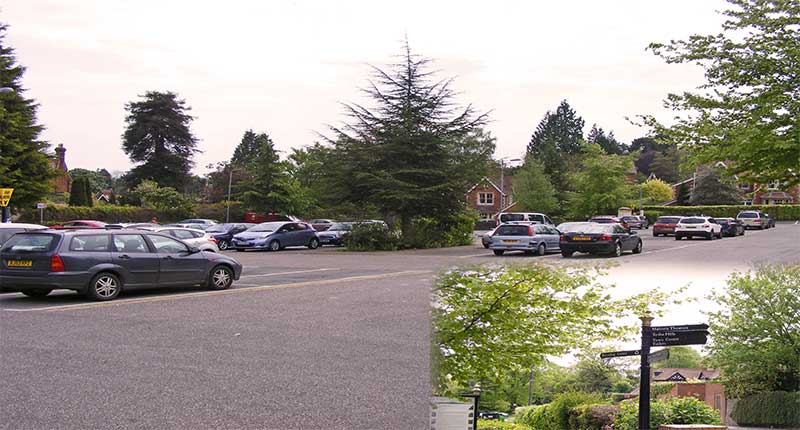
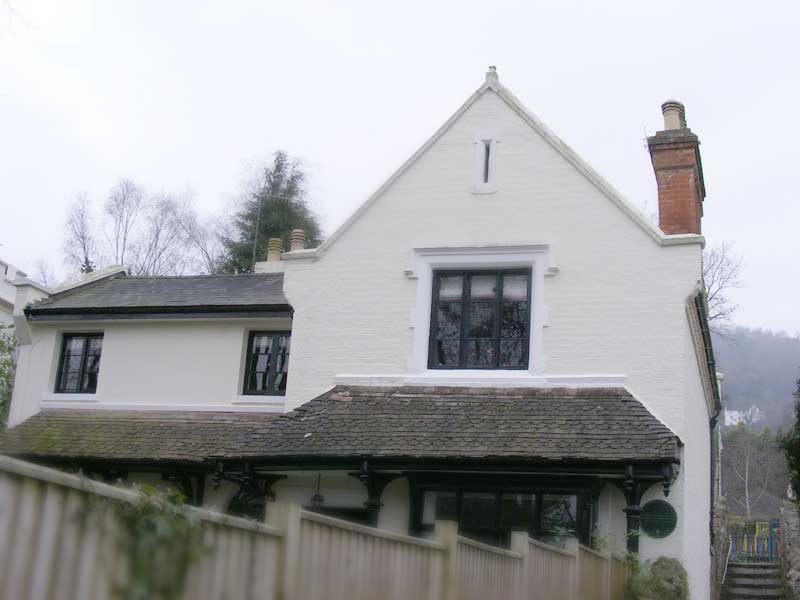 At
the south western corner of Southlea car park cross the road and walk up a
small alley into Priory Park. On the left you will pass Spa Cottage;
this was once the pump room of a water cure establishment.
At
the south western corner of Southlea car park cross the road and walk up a
small alley into Priory Park. On the left you will pass Spa Cottage;
this was once the pump room of a water cure establishment.
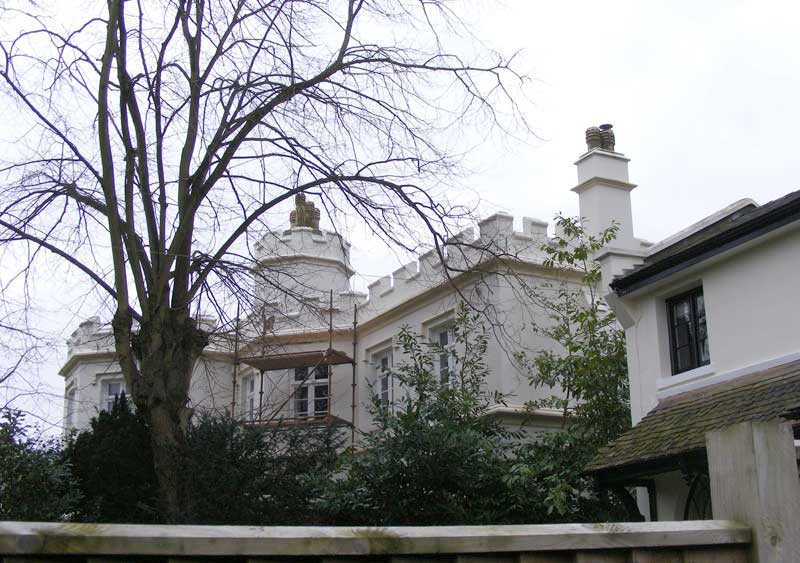 Looking
to your left, largely hidden behind a hedge, you may also glimpse a castellated house
named Oakdale which in 1873 had been named Spa Villa. We
wondered if this might once have been a
water cure establishment associated with the pump room, but have found no
evidence of that.
Looking
to your left, largely hidden behind a hedge, you may also glimpse a castellated house
named Oakdale which in 1873 had been named Spa Villa. We
wondered if this might once have been a
water cure establishment associated with the pump room, but have found no
evidence of that.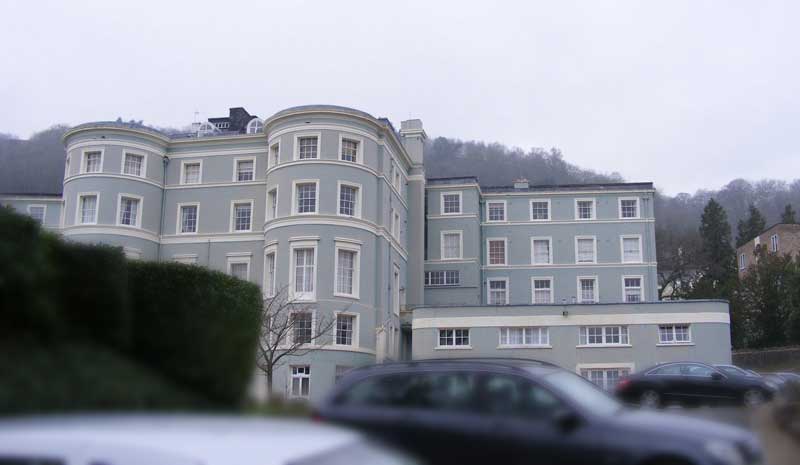
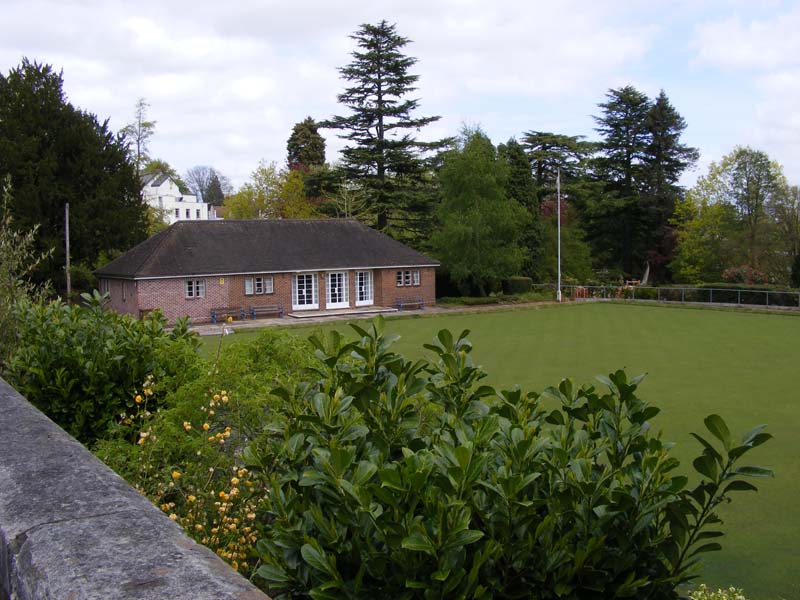
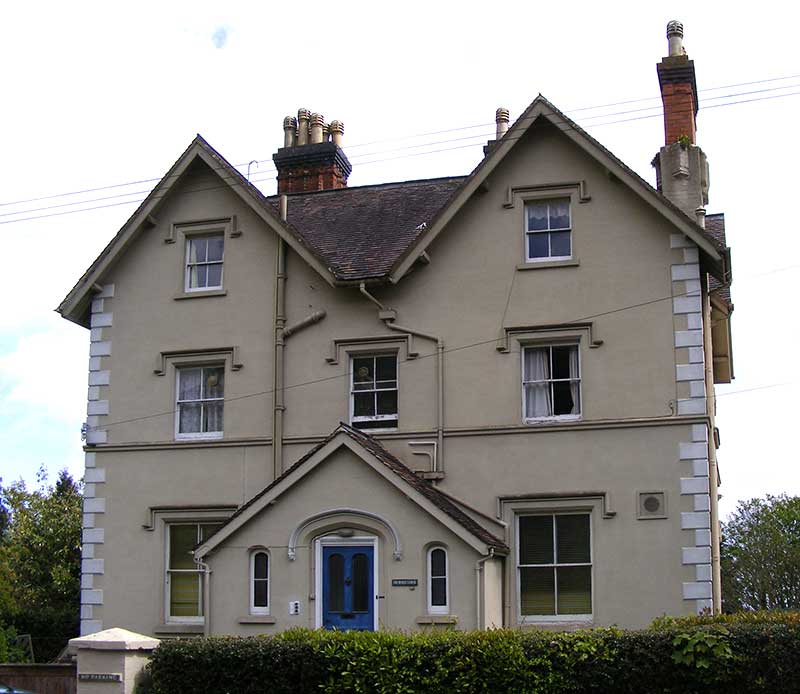
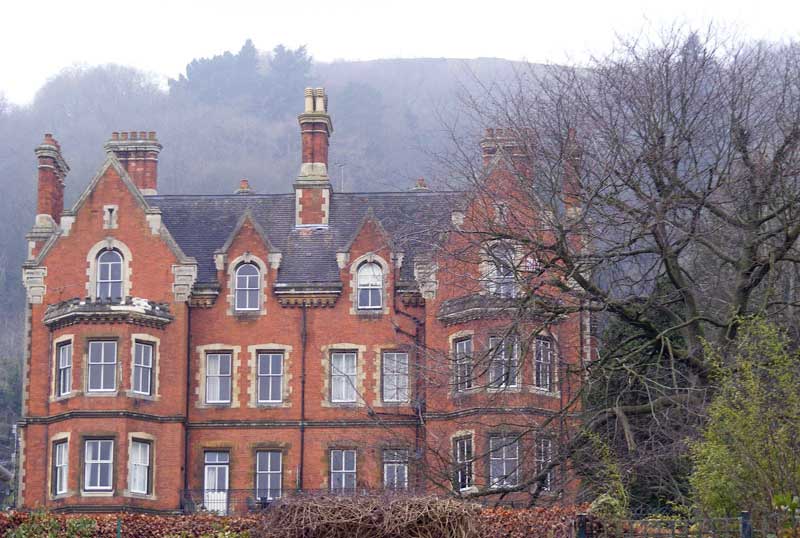
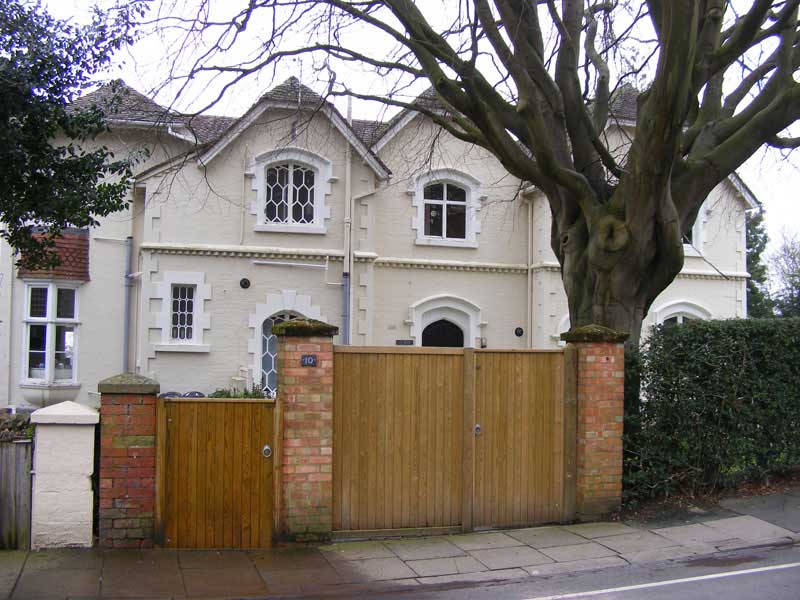
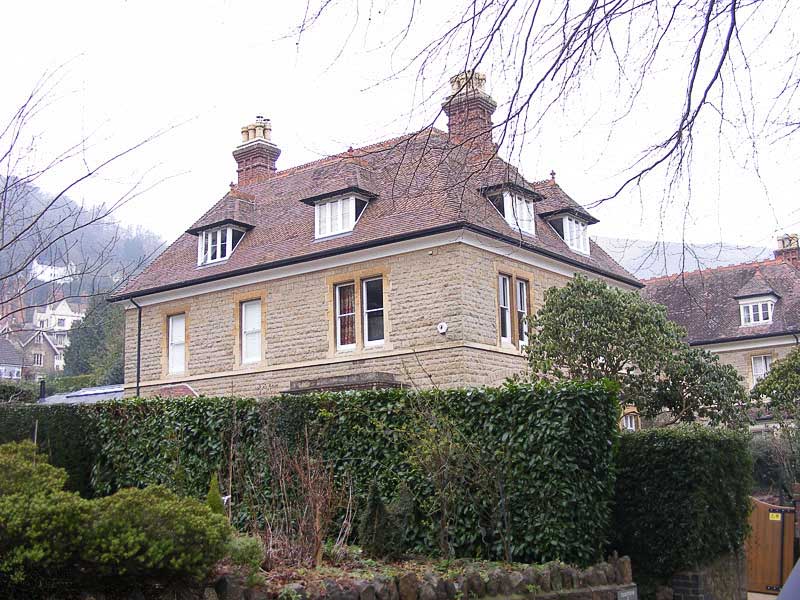
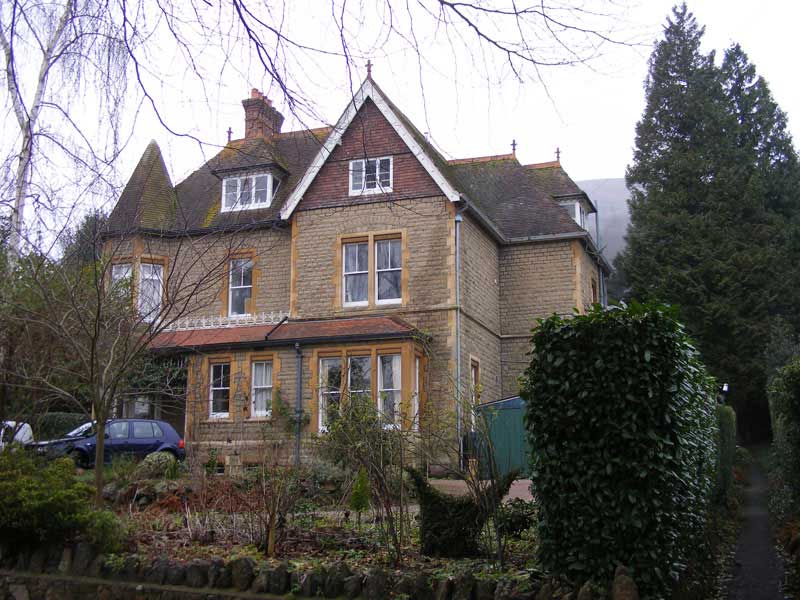
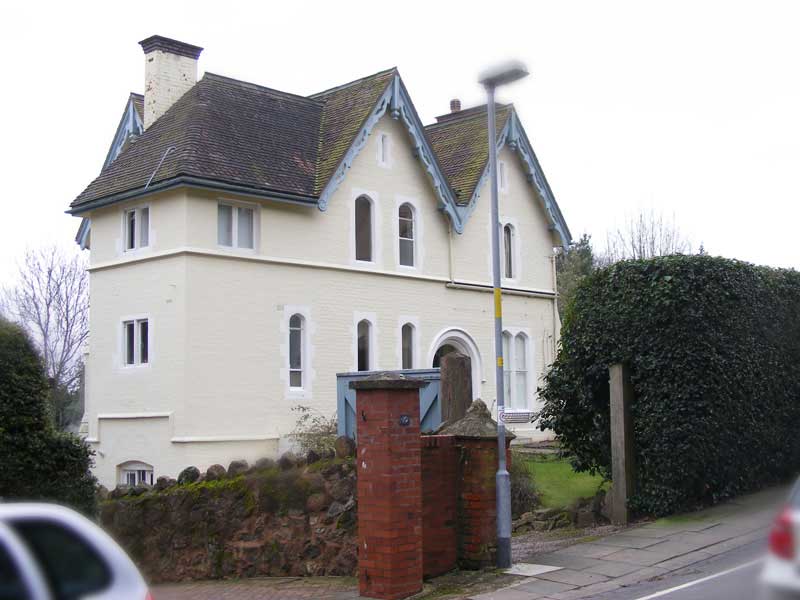

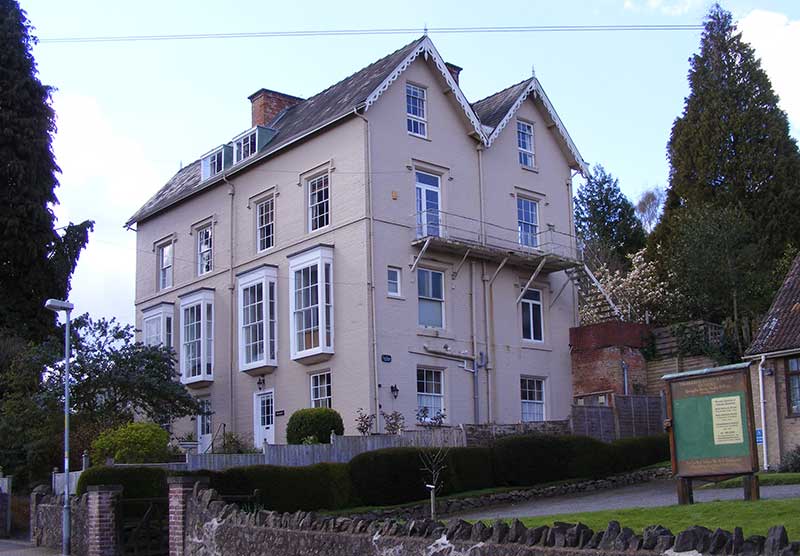
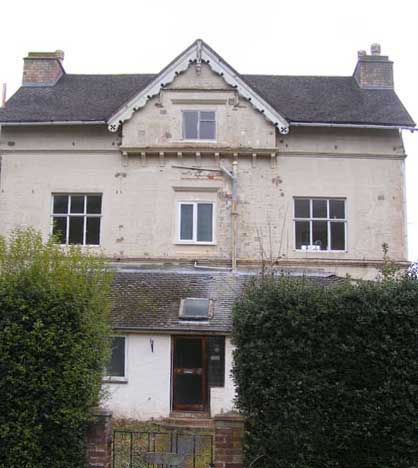
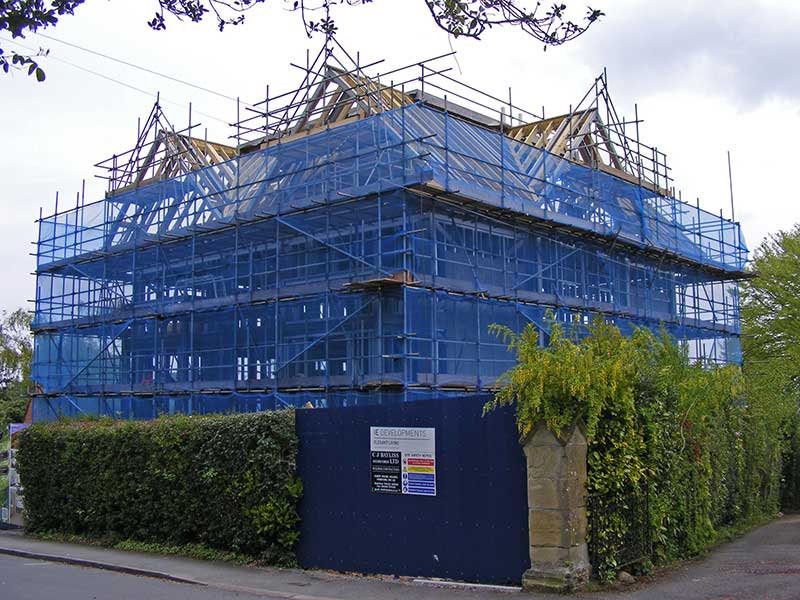
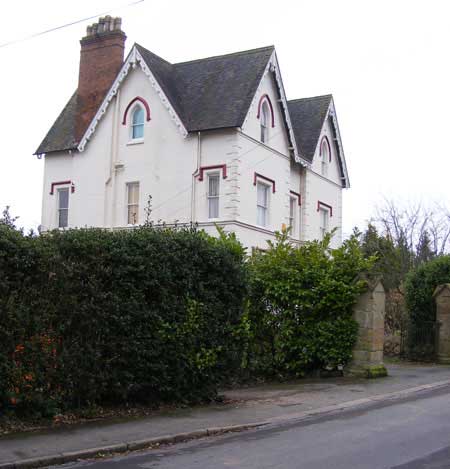
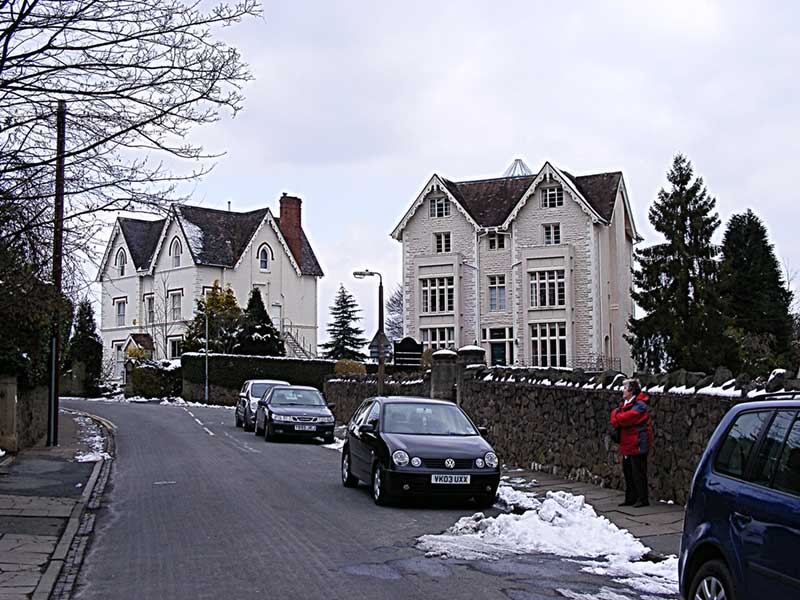
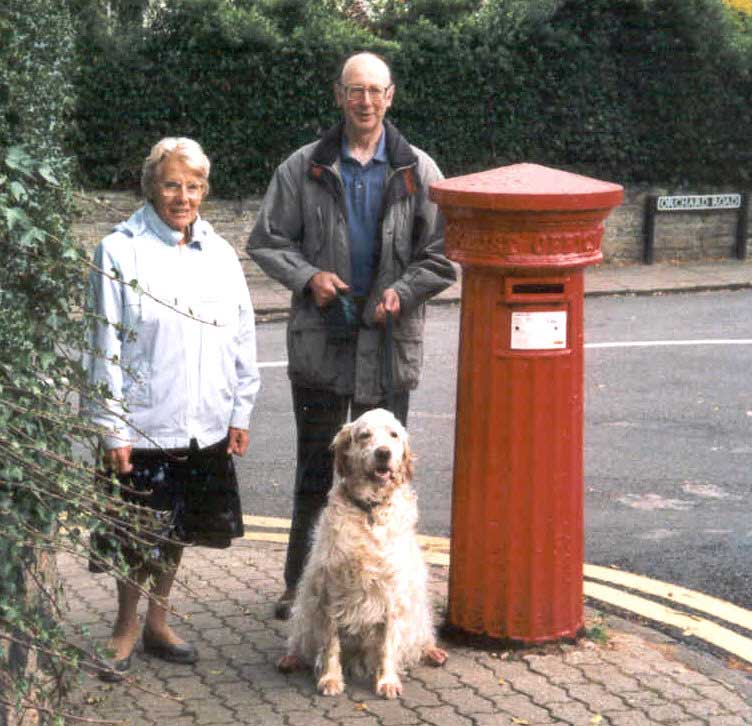 At
the end of Orchard Road, opposite St Edmunds Church Hall, turn right into
Priory Road, once named Southfields Road, where you will pass a red Victorian Pillar box, said to date
from 1857 or thereabouts.
At
the end of Orchard Road, opposite St Edmunds Church Hall, turn right into
Priory Road, once named Southfields Road, where you will pass a red Victorian Pillar box, said to date
from 1857 or thereabouts.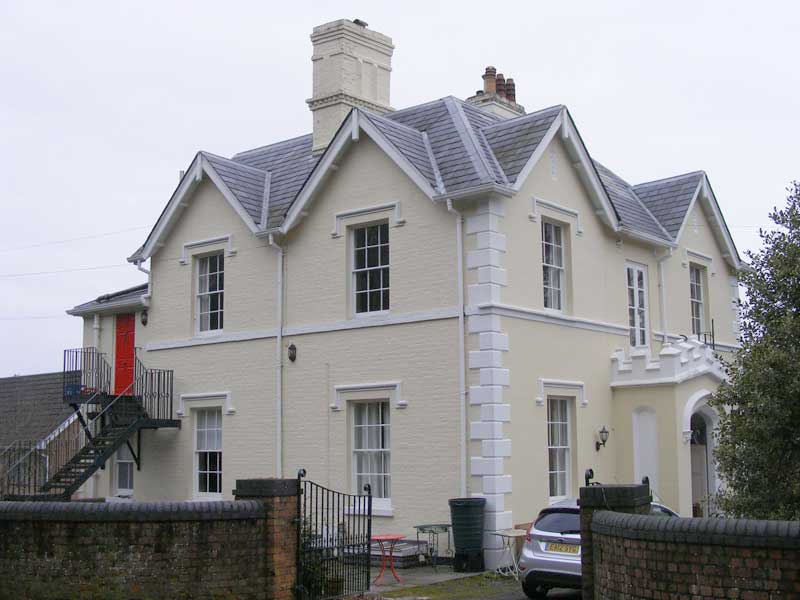
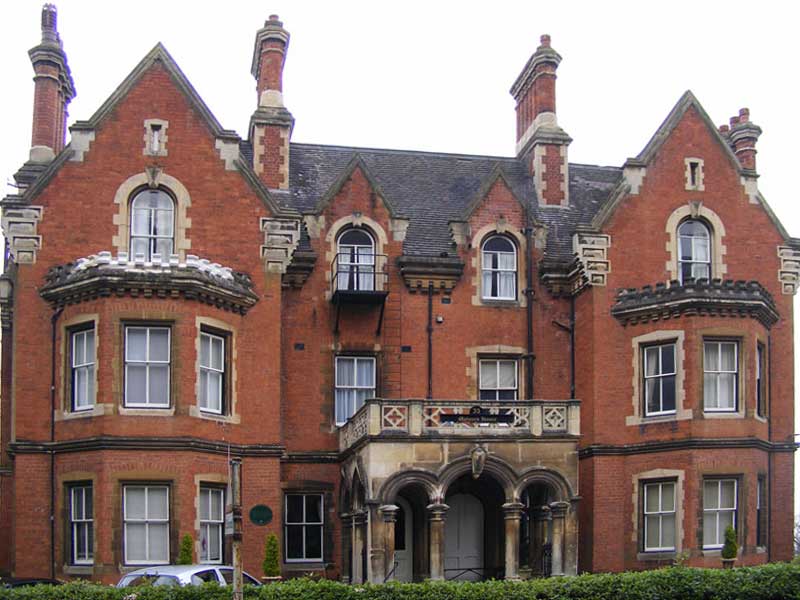
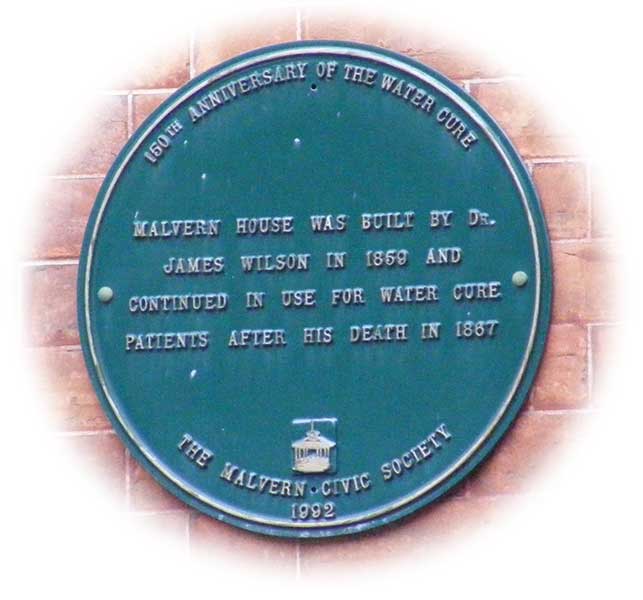
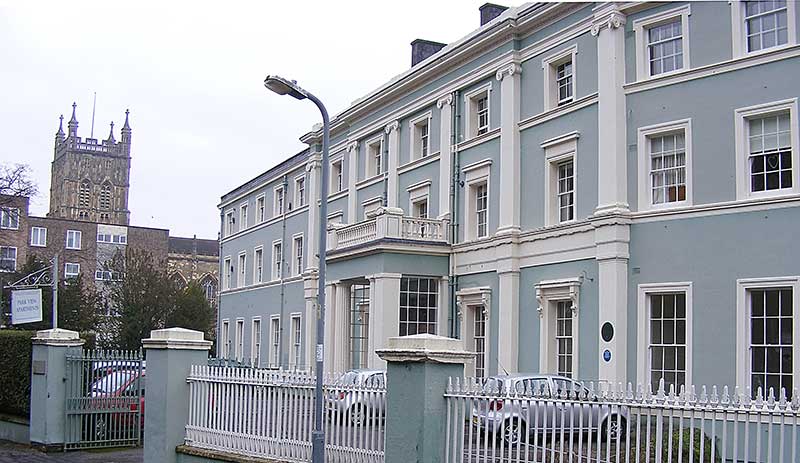
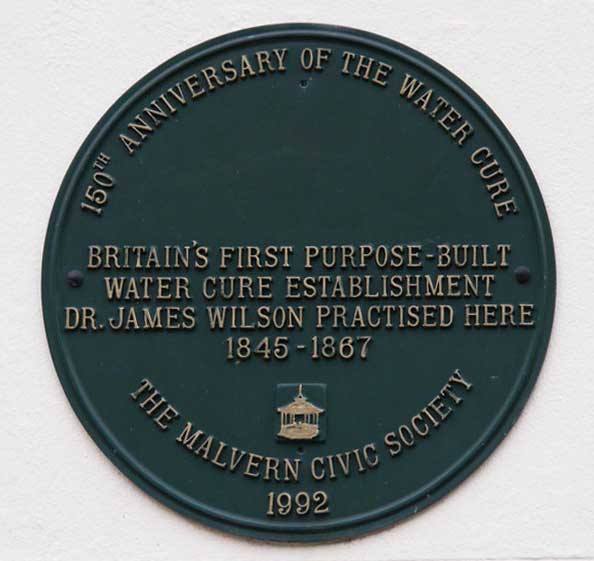
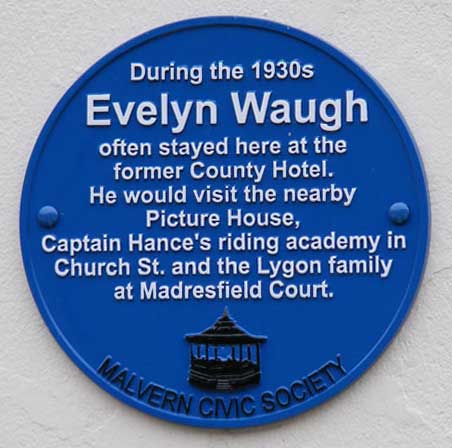
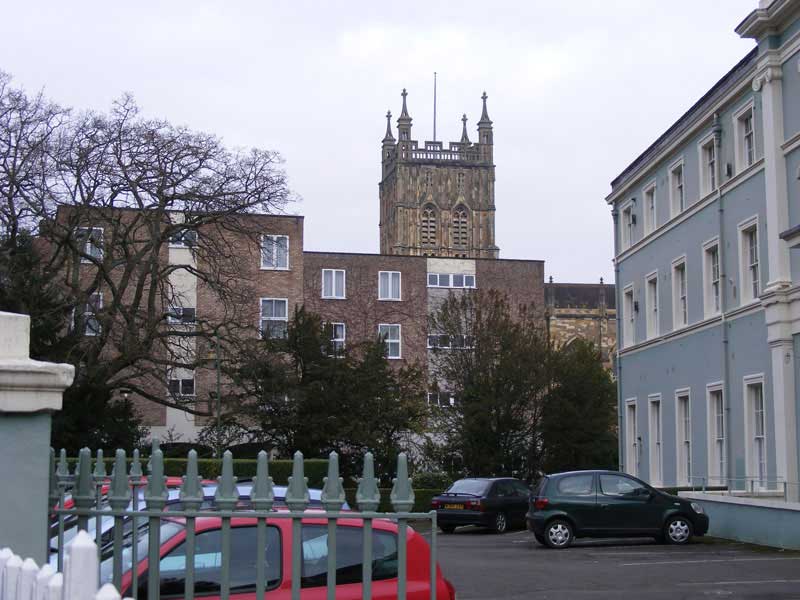
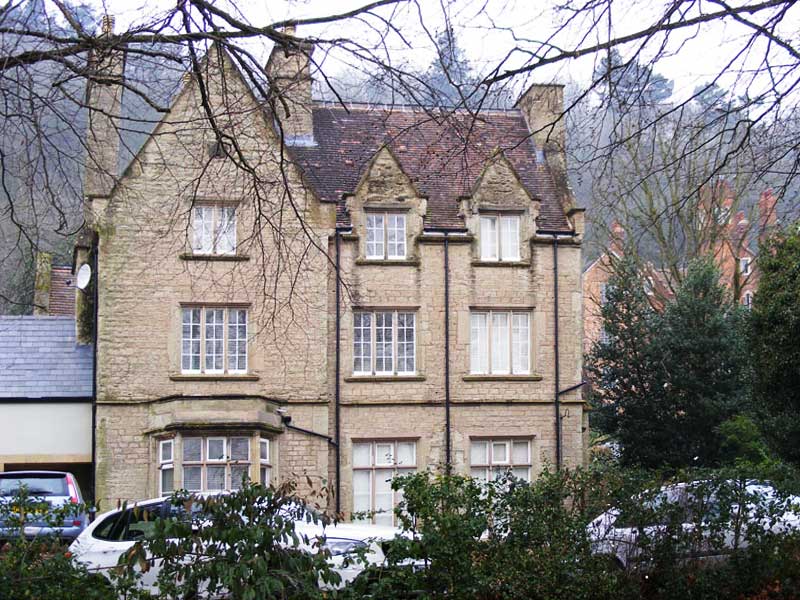
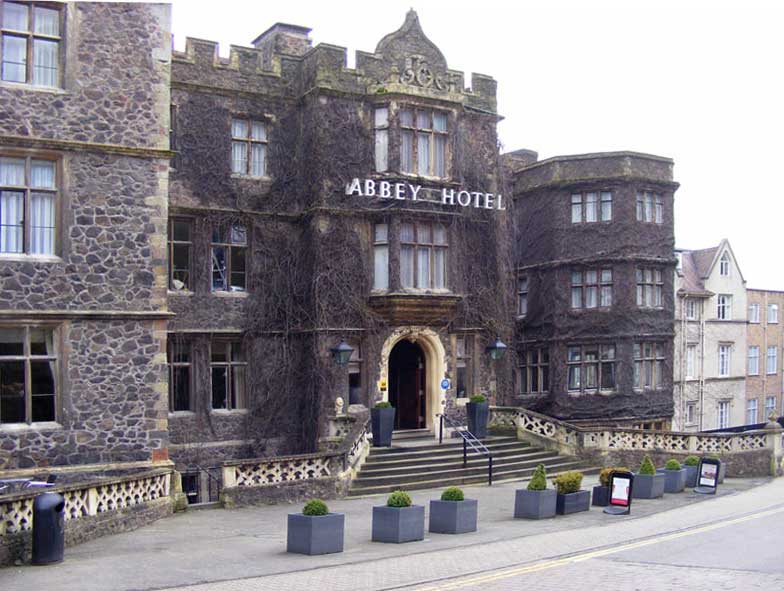
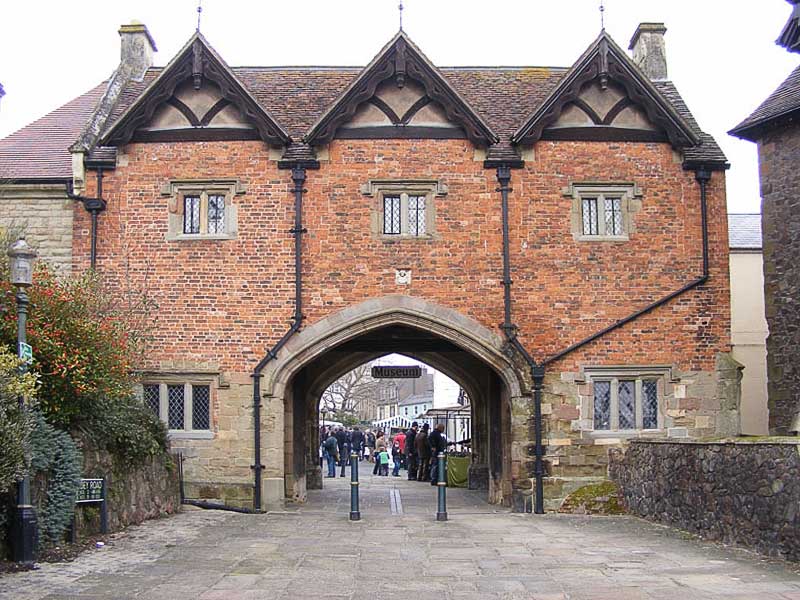
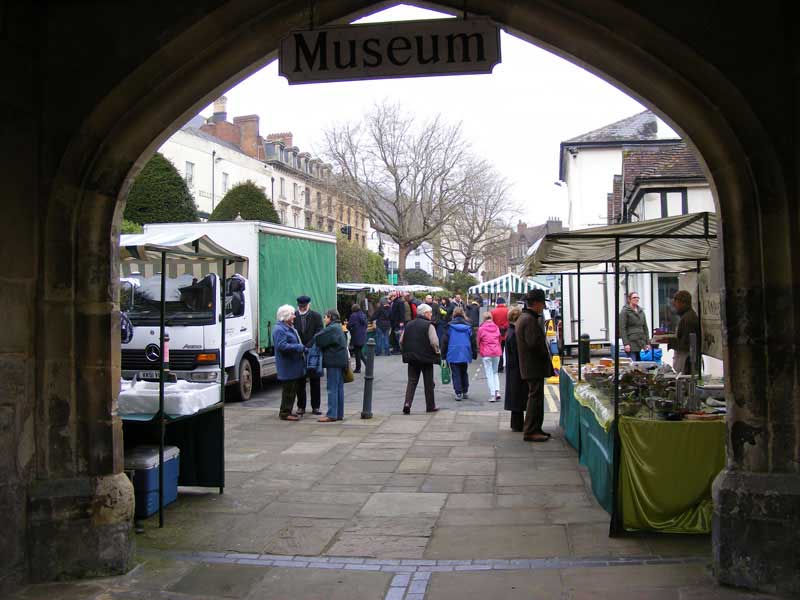
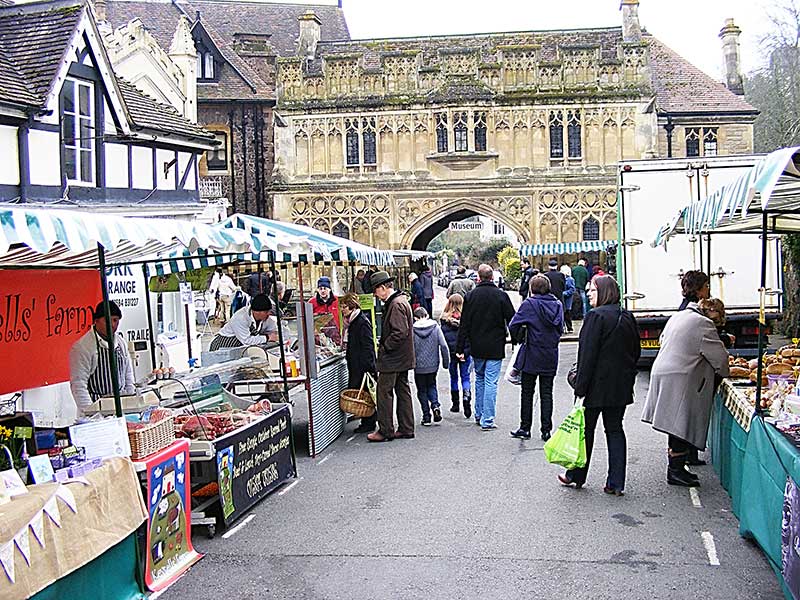
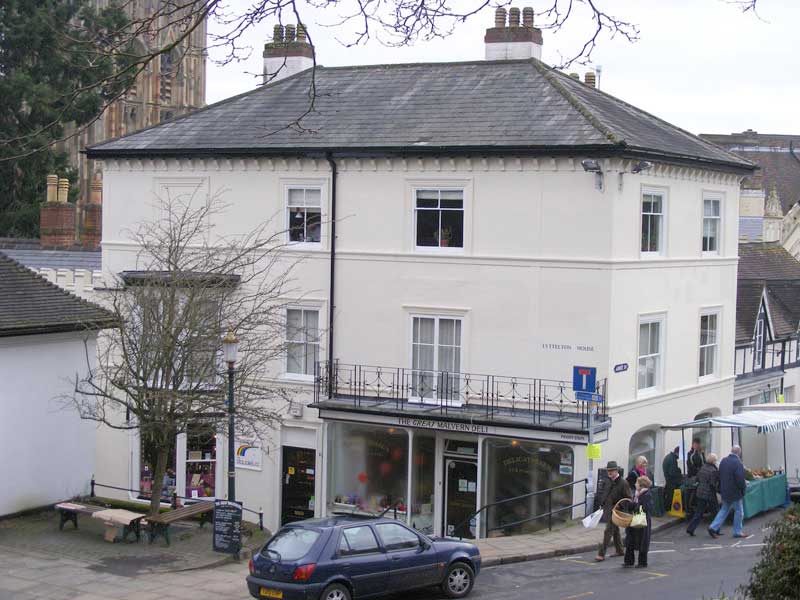
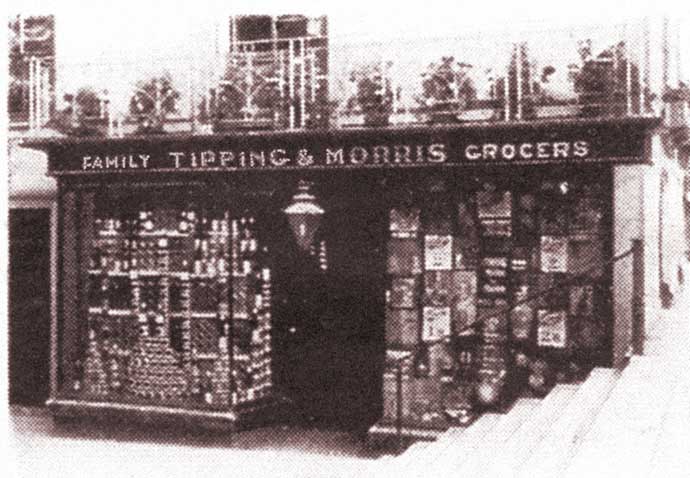
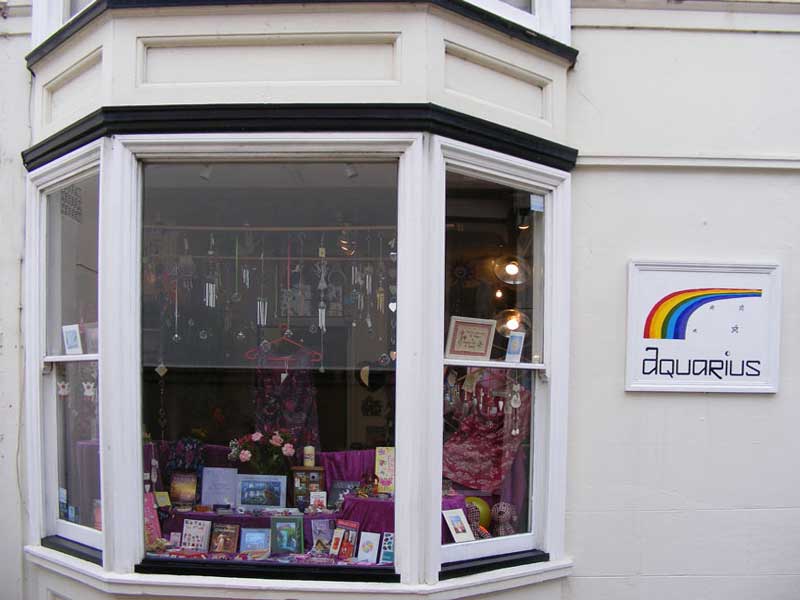
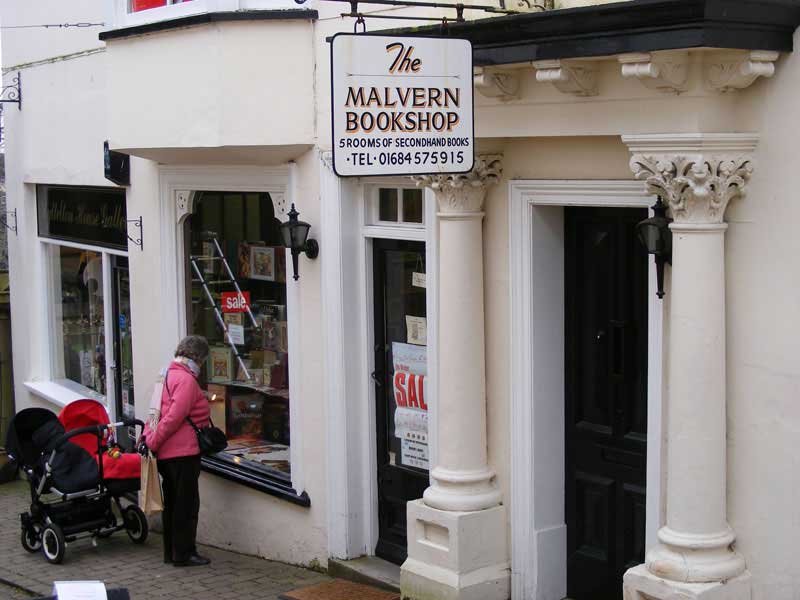
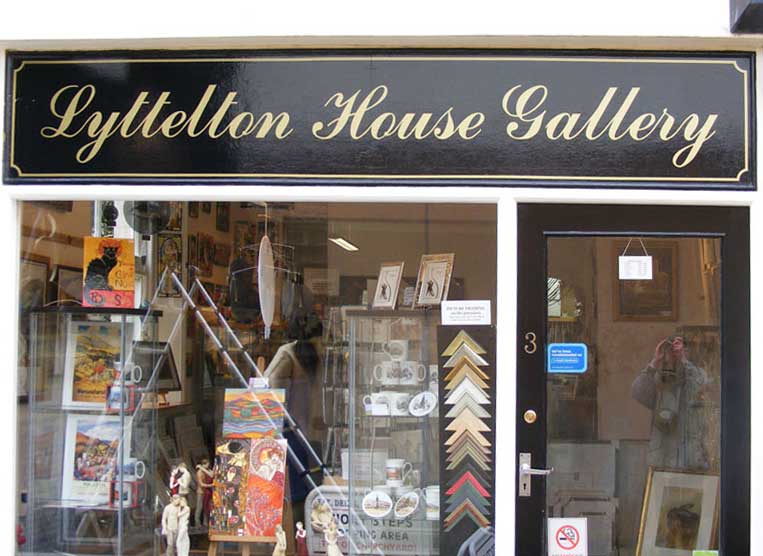
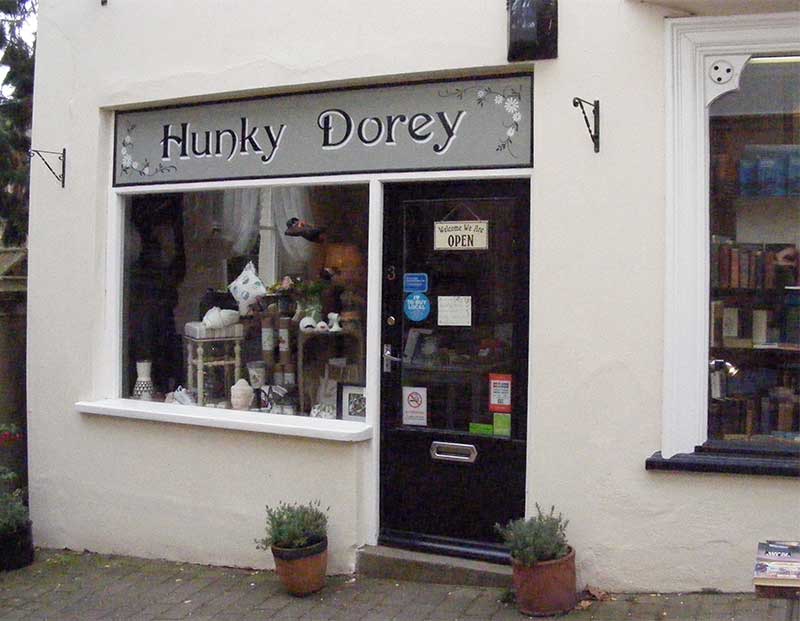
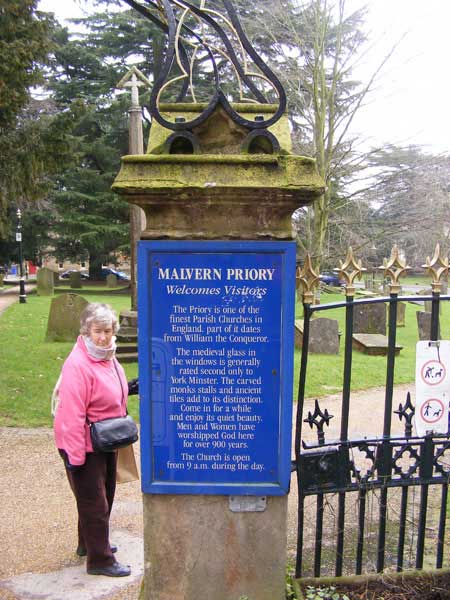
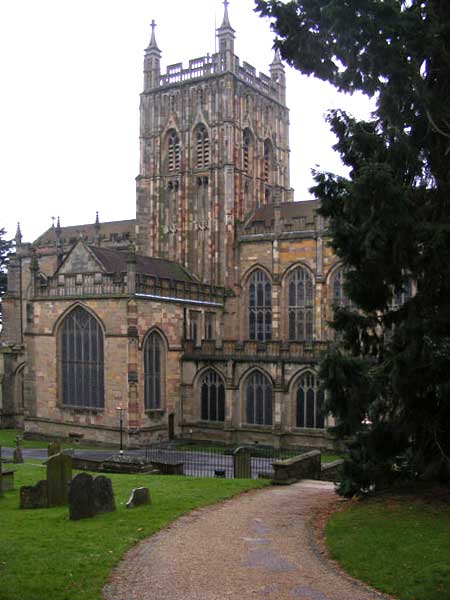
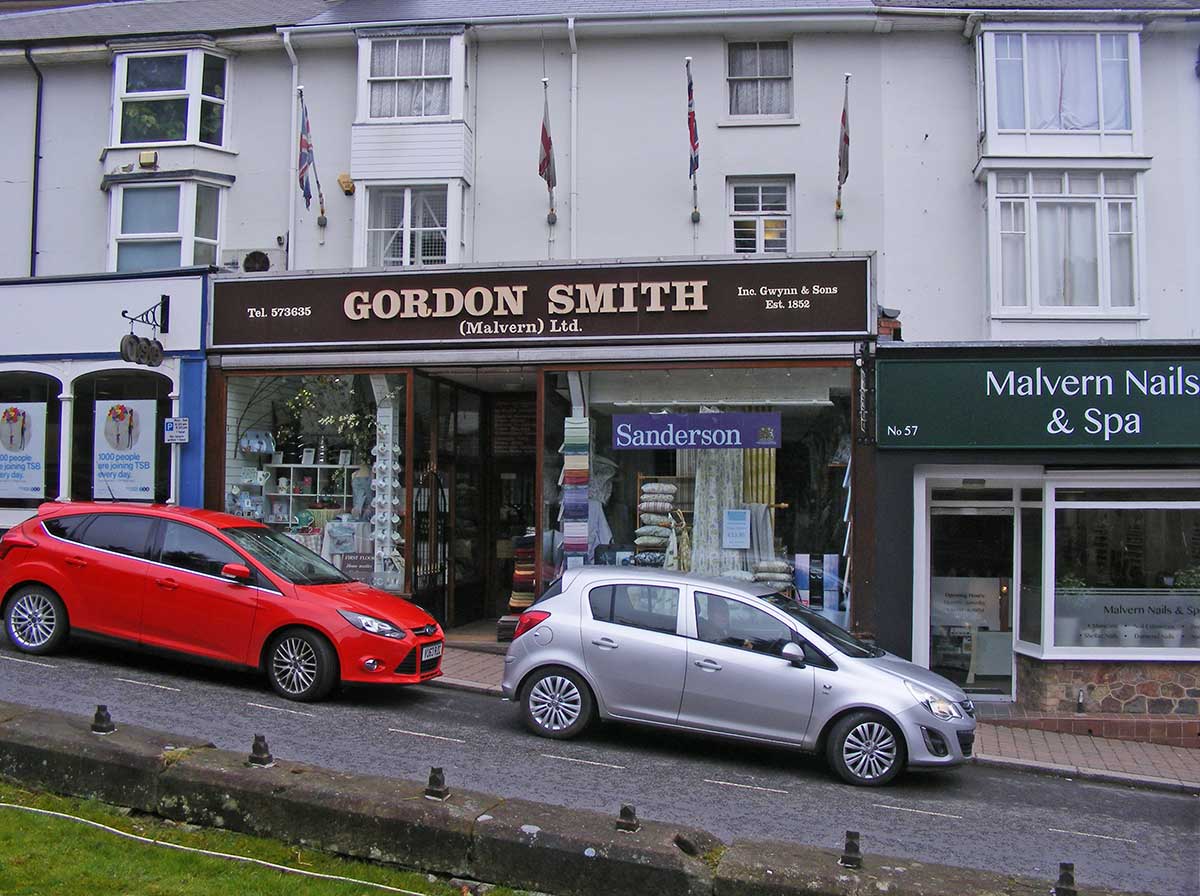
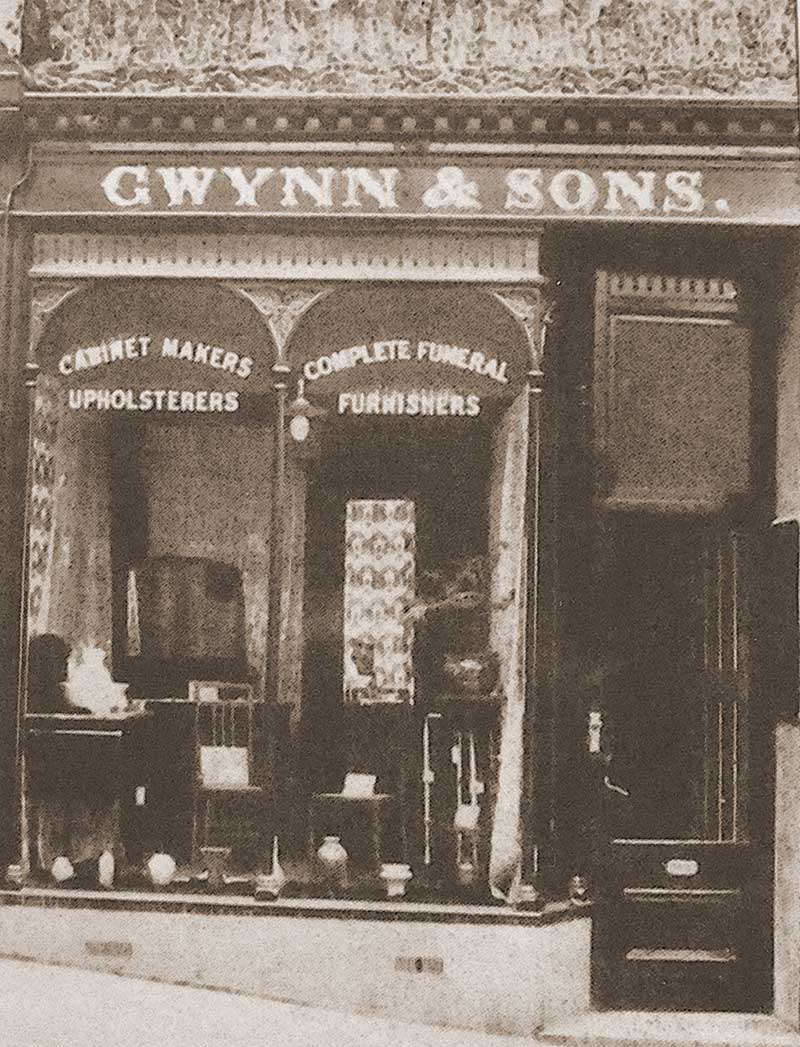 The
facade above the shop says Gordon Smith (Malvern) Ltd incorporates Gwynn and
Sons, which was established in 1852.
The
facade above the shop says Gordon Smith (Malvern) Ltd incorporates Gwynn and
Sons, which was established in 1852.